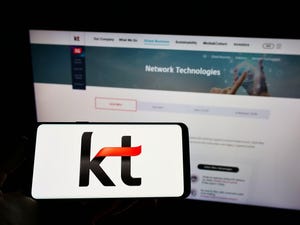Casa Systems flexes its MAC
Billed as a pathway to the future '10G' network, supplier says its new Flexible MAC Architecture (FMA) platform is in trials with tier 1 operators in multiple regions.

Casa Systems has joined the ranks of cable network access vendors to have launched a Flexible MAC Architecture (FMA), a platform for the emerging distributed access architecture (DAA) that puts hybrid fiber/coax (HFC) networks on a path toward DOCSIS 4.0 and "10G" services.
FMA, a set of specifications released by CableLabs last fall, also aims to settle the debate on where to place the MAC (Media Access Control) layer in DAA deployments. Rather than having to be fixated on keeping the MAC centralized in a remote PHY setup, or out at the edge with remote MACPHY, FMA doesn't care where the MAC is located. FMA, which separates the control and data functions of the network, paves the way for the MAC to be deployed at the node, a hub site, in a headend or even a data center.
Casa Systems said its FMA solution includes new remote MACPHY devices (RMDs) managed by the vendor's cloud-based FMA controller, which serves to orchestrate and manage the platform. The setup, the company adds, will provide cable operators with a way to transition from integrated Converged Cable Access Platforms (iCCAPs) to DAA, a prerequisite for DOCSIS 4.0, a platform that will support symmetrical multi-gigabit speeds, low latencies and enhanced security.
The product launch arrives a few weeks after Casa CEO Jerry Guo told Light Reading that the company had developed a "functional" FMA controller. "It's our belief that the original CCAP core is going to be superseded by the FMA controller," he said.
Casa Systems, which counts Charter Communications among its customers, said FMA trials are currently underway with a number of tier 1 operators in multiple countries.
More FMA action
Casa Systems' launch this week is another signal that FMA activity is heating up as cable operators start to consider their next-gen network moves after spending the earlier part of the pandemic adding capacity to their legacy HFC networks.
Last month, rival supplier Harmonic introduced a "MAC Anywhere" platform based on the CableLabs FMA specs. Taking it a step further, Harmonic said it was open to licensing partnerships with third-party suppliers of nodes and other types of hardware for HFC networks.
CommScope's latest line of DAA devices also takes an agnostic approach, as they can function as a remote PHY device (RPDs) or, with a firmware update, be configured as a remote MACPHY device (RMDs).
And while multiple cable access suppliers are getting into the act with FMA, the specifications are designed to support interoperability between vendors supplying the MAC and the various PHY elements, such as a fiber node or shelf deployed toward the edge of the network.
"The biggest takeaway for FMA is flexibility," Jon Schnoor, lead architect, wired technologies at CableLabs, told Light Reading when the FMA specs were released last year. "It allows the operator to choose when and how they implement and deploy CCAP functionality. It gives them choices of where to do it in the access network where it makes the most sense for them."
At the time, Schnoor said phase I of the FMA project is focused on remote MACPHY, with phase II expected to set upon the remote MAC core, and a phase III that will take on the full virtualization of the access network.
Related posts:
— Jeff Baumgartner, Senior Editor, Light Reading
About the Author(s)
You May Also Like












